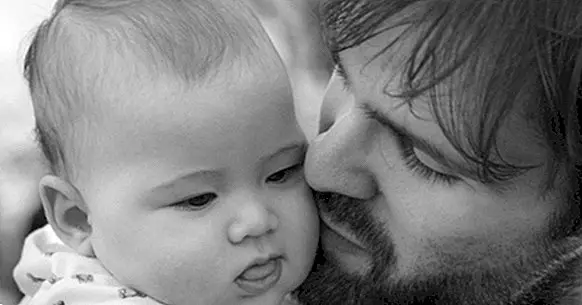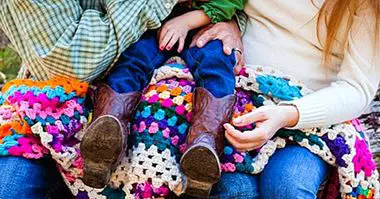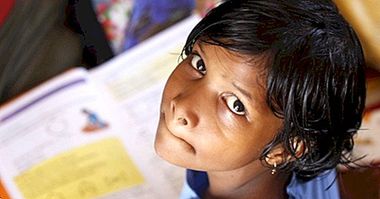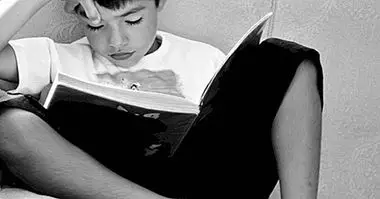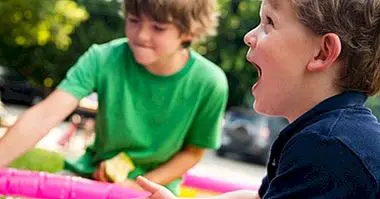The Theory of Attachment and the bond between parents and children
The attachment theory is a theory that was born a century ago, specifically in the year 1907, to explain individual differences (also called attachment styles) about how people think, feel and behave in interpersonal relationships.
The concept of "attachment" refers to the emotional links that people form with other people throughout their lives , first with their parents, and then with their friends, their partner, their partners and their children.
The beginning: Bowlby's addiction theory
There are different views on this theory, but the best known is that of John Bowlby, considered the father of the theory of attachment. He thought that Attachment begins in childhood and continues throughout life , and affirmed that there are behavioral control systems that are innate and that are necessary for the survival and procreation of human beings.
Attachment and exploration systems are central to their theory, since from very young children have an innate behavior that leads them to want to explore new things, but when they feel in danger or frightened, their first reaction is to seek protection and security of your primary caregiver.
The "strange situation" and the types of attachment according to Mary Ainsworth
Bowlby laid the foundations for the theory, but another important figure in the study of attachment is Mary Ainsworth, one of the most recognized psychologists for her contribution to this theory. Ainsworth also thought that control systems existed, but he went a little further and proposed his concept of "strange situation", with which he added to the theory of attachment three styles of behavior: insurance, Insecure-Evolutionary and Insecure-Ambivalent. Later, other authors identified other types of attachment, such as anxious attachment or disorganized attachment.
Types of attachment
The strange situation refers to the laboratory process in which the child is studied in interaction with his mother and with a strange adult, that is, in a situation with someone who is not familiar. The results of Ainsworth's longitudinal study led him to conclude that:
- The kind of secure attachment It is characterized because the child seeks protection and safety of the mother and receives constant care. The mother is usually a loving person and shows and is constantly emotional, which allows the child to develop a self-concept and positive self-confidence. In the future, these people tend to be warm, stable and with satisfactory interpersonal relationships.
- The type of avoidant attachment It is characterized because the small one is raised in an environment in which the nearest carer stops attending constantly to the protection needs of the latter. This is counterproductive to the child's development, since it does not help him acquire the feeling of self-confidence he will need later in life. Therefore, children (and adults as well when they have grown up) feel insecure and displaced by the experiences of abandonment in the past.
- The type of ambivalent attachment It is characterized because these individuals respond to separation with great anguish and often mix their attachment behaviors with protests and constant anger. This is because they have not correctly developed the necessary emotional skills, nor have they had expectations of trust or access to caregivers.
The four types of attachment according to Hazan and Shaver
Later, during the 1980s, Cindy Hazan and Phillip Shaver expanded the attachment theory to adult love relationships . These identified four attachment styles: secure attachment, anxious-worried attachment, avoidant-independent attachment Y disorganized addiction.
1. Secure attachment
They are adults who present a more positive view of themselves and their interpersonal relationships . They are not worried about privacy or independence, because they feel safe.
2. Worried-anxious attachment
They are people who often seek constant approval from others and the couple's continuous response . Therefore, they are dependent, distrustful individuals and have an unpositive view of themselves and their interpersonal relationships. They have high levels of emotional expression and impulsiveness.
3. Avoidant-independent attachment
They are individuals who they usually isolate themselves because they do not feel comfortable in intimacy with other people , so they are very independent. They see themselves as self-sufficient and without the need for close relationships. They usually suppress their feelings.
4. Disorganized attachment
Adults with distrustful attachment they are characterized because they have contradictory feelings in their interpersonal relationships . That is, they may feel both desiring and uncomfortable with emotional intimacy. They usually see themselves with little value and distrust others. Like the previous ones, they seek less intimacy and often suppress their emotions.
Fundamental principles for a secure parent-child bond
It is clear that, as many investigations have shown, the attitude of parents towards their children will be decisive when it comes to their child's development . Therefore, parents should be careful when treating their children and should have patience to grow up healthy and with a strong personality to deal with situations that may arise in the future.
In summary, it is important that parents try to:
- Understand children's signals and how they communicate
- Create a base of security and trust
- Respond to your needs
- Embrace him, caress him, show him affection and play with him
- Take care of your own emotional and physical wellbeing since it will affect the behavior towards your child

